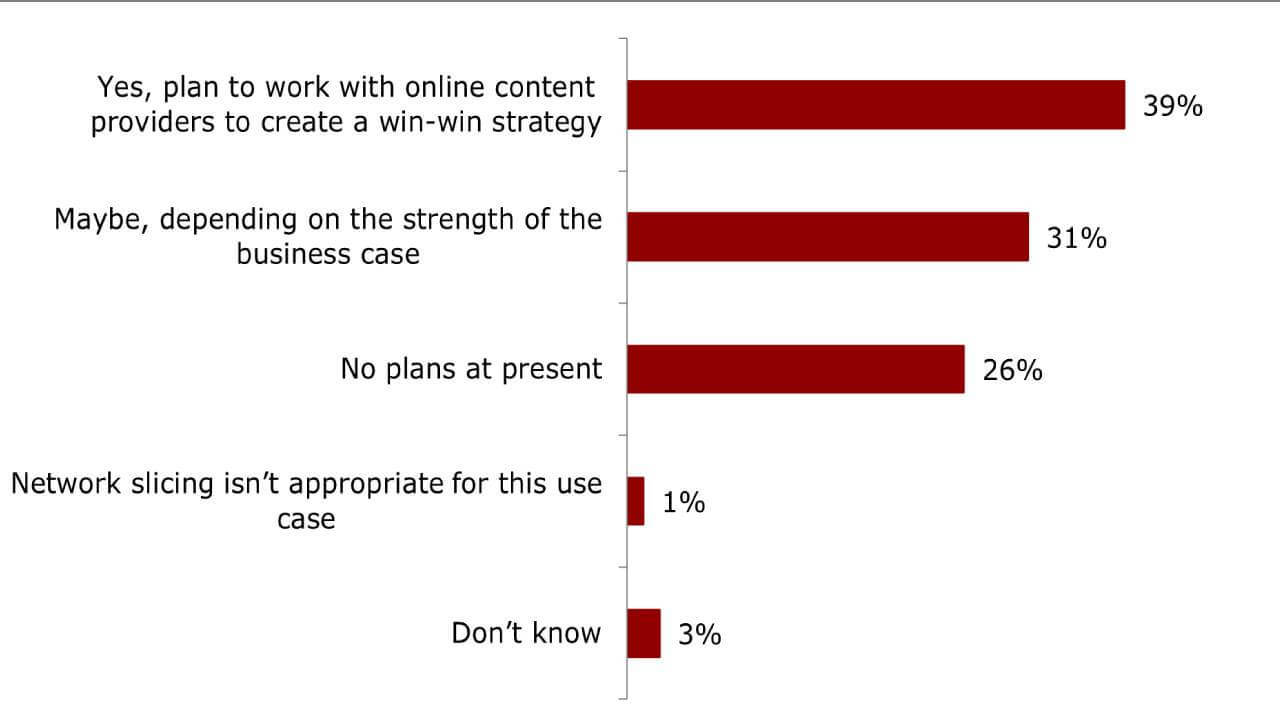As originally published in Light Reading
Network slicing is a new capability in the 5G architecture that offers a mechanism to create and operate end-to-end logical networks tailored to the requirements of different use cases. This could include, for example, enabling services to perform better for the customer, ensuring services operate within specific privacy and security parameters or managing network traffic more efficiently.
The new Heavy Reading 5G Network Slicing Operator Survey is intended to help industry participants better understand the status of this technology and provide insight into how operators will use network slicing capabilities to offer commercial services. To read the full survey, click here.
One question in the survey was about how 5G mobile operators can use network slicing to evolve how they work with so-called over-the-top (OTT) companies.
Most of the traffic on broadband access networks is generated by customer demand for services from just a few Internet companies (56% of global network traffic is served by just six companies, according to Sandvine). It is therefore logical to consider how slicing may be able to improve the network efficiency and user experience of the most in-demand services and how it may enable new service experiences offered by these types of providers. Examples of such experiences include virtual reality gaming, metaverse meetings and augmented reality.
Specifically, the question asked if operators "plan to use network slices to deliver and monetize high volume OTT services." The response (see figure below) shows 39% say their company plans to do this, ahead of a more equivocal 31% that may do so, depending on the business case, and the remaining 30% that have no plans (26%), don't think slicing is appropriate (1%) or don't know (3%).
With the rise in over-the-top (e.g., Netflix, Google, Metaverse) traffic, does your organization plan to use network slices to deliver and monetize high volume OTT services?

(Source: Heavy Reading)
This is a difficult result to analyze. First, because the data indicates operators would probably, on balance, like to pursue this model, but the result is not conclusive. And second, because monetizing so-called OTT traffic is such a thorny issue.
It is thorny because of net neutrality conventions and because some telecom operators are lobbying regulators to allow them to levy charges on OTT Internet companies to carry traffic. Some argue that charges might contribute to rural network development funds, and others, in European speak, want OTT companies to make a "fair contribution" to the costs of building and operating networks.
A telecommunications firm planning to work with an OTT does not necessarily mean the OTT will be receptive. It could simply be that some respondents to the survey think telcos can/should derive some revenue from OTTs. So why not try it? Presumably, the thinking is that network slicing will provide a capability that improves the service, and the operator can somehow charge the OTT provider for this or monetize the customer via a revenue share. But this model has not worked in the past. It is thus tempting to ascribe the 39% result in the figure above to wishful thinking by telecom respondents.
However, OTT companies already collaborate very closely with telecom operators to optimize services, even if telcos do not directly monetize this work — for example, through content delivery networks (CDNs) or direct connections to cloud infrastructure and as channel partners. An alternative analysis, therefore, is to consider that what is normal in terms of telco and OTT working relationships and monetization today will not necessarily stay that way. As application performance requirements become more stringent, customer expectations increase and new services emerge, there will be a need to rethink and re-architect how telcos and Internet companies interact. How this translates to monetization is far from clear, but scenarios where the customer (who is the source of traffic), the network provider and the application provider all benefit are worth exploring.
In mobile networks, 5G network slicing will potentially allow for a closer working relationship between telcos and application providers to the benefit of customers.
To download a copy of the full 5G Network Slicing Operator Survey, click here.
Topics: OTT, Featured, Mobile Network Management, 5G, monetization, Network Slicing





